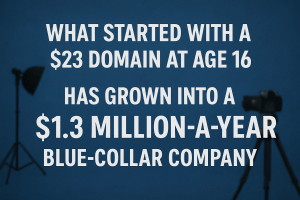In the world of finance, stability is key. However, during the 1980s and 1990s, the American financial system was rocked by a crisis that exposed the dangers of risky lending practices. This crisis, known as the Savings and Loan crisis, resulted in the collapse of hundreds of institutions and billions of dollars lost. This blog post will delve into the Savings and Loan crisis story, exploring how seemingly safe bets on real estate turned into a financial nightmare. We will uncover the factors that contributed to the crisis, its devastating consequences on the industry, and the lessons learned that continue to shape financial regulations today. So let’s examine the cautionary story about how a single rash loan bought down a whole business.
What Was the Savings and Loan (S&L) Crisis?

Image: wallstreetmojo
In the late 1980s, banks and thrifts were impacted by the Savings and Loan (S&L) Crisis, a time of speculative lending and subsequent financial catastrophe. Almost one-third of the 3,234 savings and loan organizations in the US failed due to the crisis. In 1989, the S&L crisis led to regulatory changes and a taxpayer-funded rescue.
The issue started in the turbulent interest rate environment, stagflation, and poor development of the 1970s and ended up costing $160 billion in total, of which $132 billion was paid for by taxpayers. Adopting greatly slackened and broadened lending standards that drove desperate banks to take far too much risk balanced by far too little capital on hand, as well as speculation and moral hazard brought about by the combination of taxpayer guarantees and deregulation, were key factors in the S&L crisis.
The Way the Crisis Started
President Ronald Reagan signed the Garn-St. Germain Depository Institutions Act in 1982 in response to the dire economic conditions facing S&Ls. This act removed interest rate caps and loan-to-value ratios for S&Ls and permitted them to retain 30% of their assets in consumer loans and 40% in commercial loans. Due to Regulation Q’s removal from S&Ls, the difference between the cost of financing and the rate of return on assets narrowed.
Since reward was no longer correlated with risk, zombie bank thrifts started offering ever-higher interest rates to draw capital. S&Ls started making significantly riskier junk bond and commercial real estate investments. This approach of investing in riskier ventures and financial products was predicated on the expectation of greater profits. Naturally, taxpayers via the Federal Savings and Loan Insurance Corporation (FSLIC) would be left carrying the bag if such returns never materialized for bank or S&L officials. That’s precisely what transpired in the end.
A taxpayer-funded guarantee backstop combined with deregulated lending and capital restrictions led to a massive moral hazard in the S&L sector. S&Ls were encouraged to take excessive risks and were given more latitude. As a result, the business saw tremendous expansion, and speculative risk skyrocketed.
Initially, the procedures appeared effective, at least for a few S&Ls. S&L assets increased by about 50% by 1985—a much quicker expansion rate than banks. In Texas, S&L growth was very strong. Certain state lawmakers gave S&Ls permission to increase their bets by making risky real estate investments. As of 1985, more than half of S&Ls were not profitable.
Even failed S&Ls were permitted to continue lending, even though strain was growing on the FSLIC’s finances. The FSLIC ran out of money by 1987. The federal government recapitalized the FSLIC, putting taxpayers in even greater danger rather than letting it and S&Ls fail as they were certain to. The S&Ls could keep taking on more risk for a bit longer.
Savings and Loan Crisis Fraud
Insider fraud directly resulted from some S&Ls’ “Wild West” mentality. In one popular scam, two partners worked with an appraiser to purchase land with S&L loans, which they then flipped for enormous profits. A parcel would be bought by Partner 1 at its estimated market value. After that, the two would work with an appraiser to reassess it at a much greater value. After that, Partner 2 purchased the property with the help of a loan from an S&L that eventually defaulted. The appraiser and partners would split the earnings. Certain S&Ls were aware of these fraudulent transactions and permitted them to occur. Even after becoming aware of fraud, law enforcement was sluggish in acting on it because of problems with personnel, workload, and the intricacy of these investigations.
Aftermath of the Savings and Loan Crisis
Arguably, the most disastrous banking sector collapsed since the Great Depression, which occurred during the S&L crisis. By 1989, there were over a thousand failing S&Ls in the US, destroying one of the safest sources of house mortgages. The 1990–1991 recession was most likely caused by the banking sector and the real estate market taking a combined hit, as the number of new homes plunged to a level not seen since World War II. Some economists hypothesize that the S&L crisis and the 2007 subprime mortgage crisis were caused by comparable financial and regulatory incentives that generated moral hazard.
Crisis of Savings and Loans: State Insurance
The FSLIC was created to protect people who put their hard-earned money into S&Ls. After S&L banks failed, the FSLIC was left with a $20 billion liability, which ultimately caused the company to go bankrupt since premiums paid to the insurer were significantly less than liabilities.
Following the FSLIC’s collapse in 1989, the Federal Deposit Insurance Corporation (FDIC), which currently regulates and protects deposits, took over the obligations of the former institutions.
State-run funds supported the deposits of almost 500 banks and financial institutions during the S&L crisis, which ended in the early 1990s. However, the failure of these banks, which cost at least $185 million, all but eliminated the idea of state-run bank insurance funds.
How Could Regulators Have Addressed the Savings and Loan Crisis More Effectively?
Regulators could not prevent savings and loans from making hazardous loans using federally guaranteed deposits. Reagan also eliminated the funding of the FHLBB’s regulatory staff, which made it impossible for them to look into high-risk loans. A few states also approved laws that permitted savings and loans to be used for speculative real estate investments.
Additionally, mark-to-market accounting, which calls for constant adjustments to asset values to reflect their fundamental values, was not used by banks at the time. Therefore, banks were not making their assets appear more profitable than they were by depreciating them on their books if they lost value.
How did the Savings and Loan Crisis influence Commercial Banks?
Commercial banks and savings and loans have been subject to high taxes to fund the Savings and Loan Crisis. After Congress removed the barriers separating S&Ls from commercial banks at the end of the 1980s, a large portion of the S&L sector has now been absorbed into the mainstream banking sector.
Conclusion
After the Great Depression, the first significant financial crisis was the Savings and Loan Crisis of the 1980s and 1990s. This crisis caused billions of dollars in losses, the closure of thousands of savings and loan organizations, and harm to taxpayers and consumers. Several financial reforms were implemented after the crisis; nevertheless, these measures were insufficient to prevent another crisis in 2007–2008, which ultimately resulted in the Great Recession.








